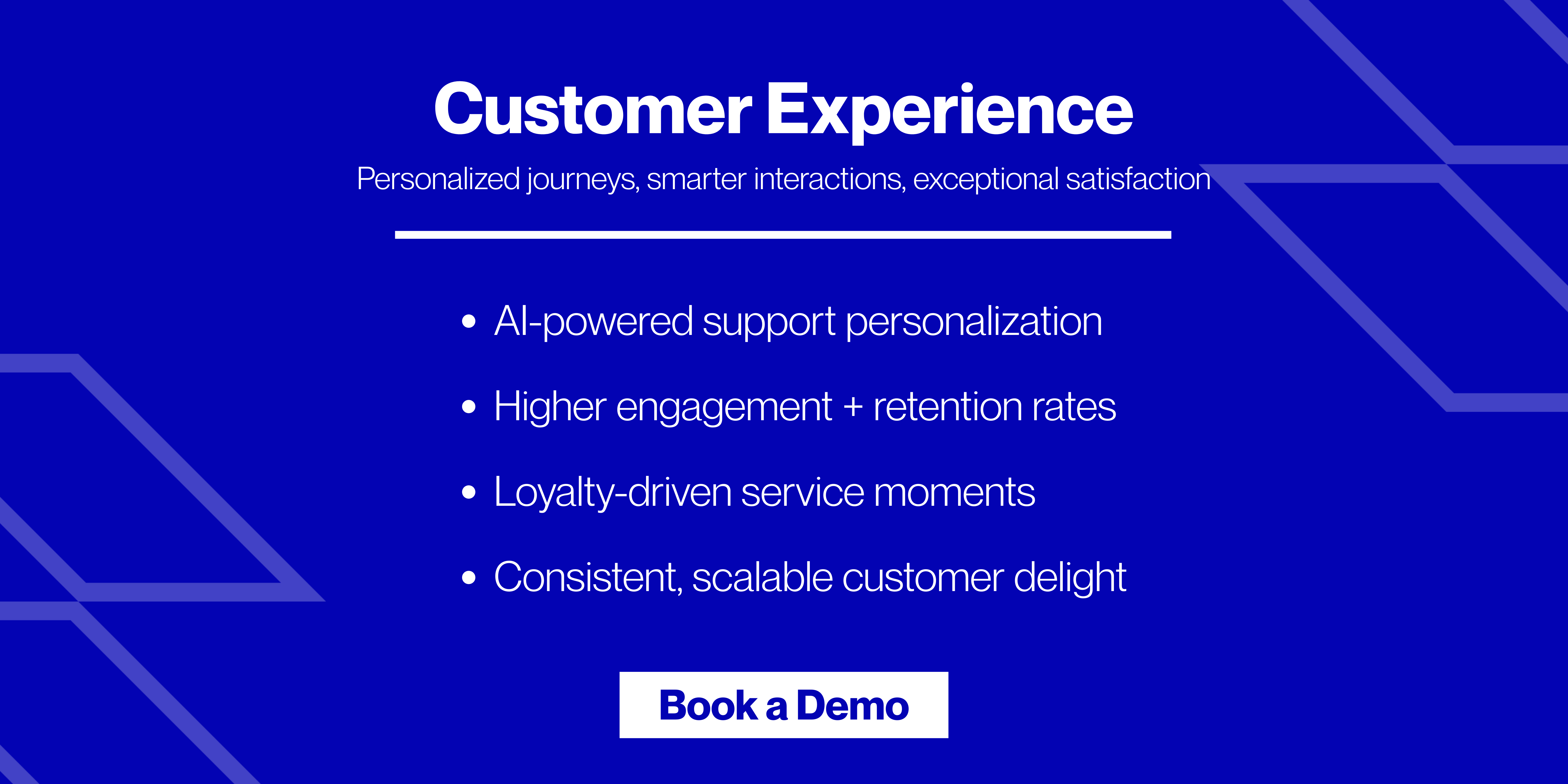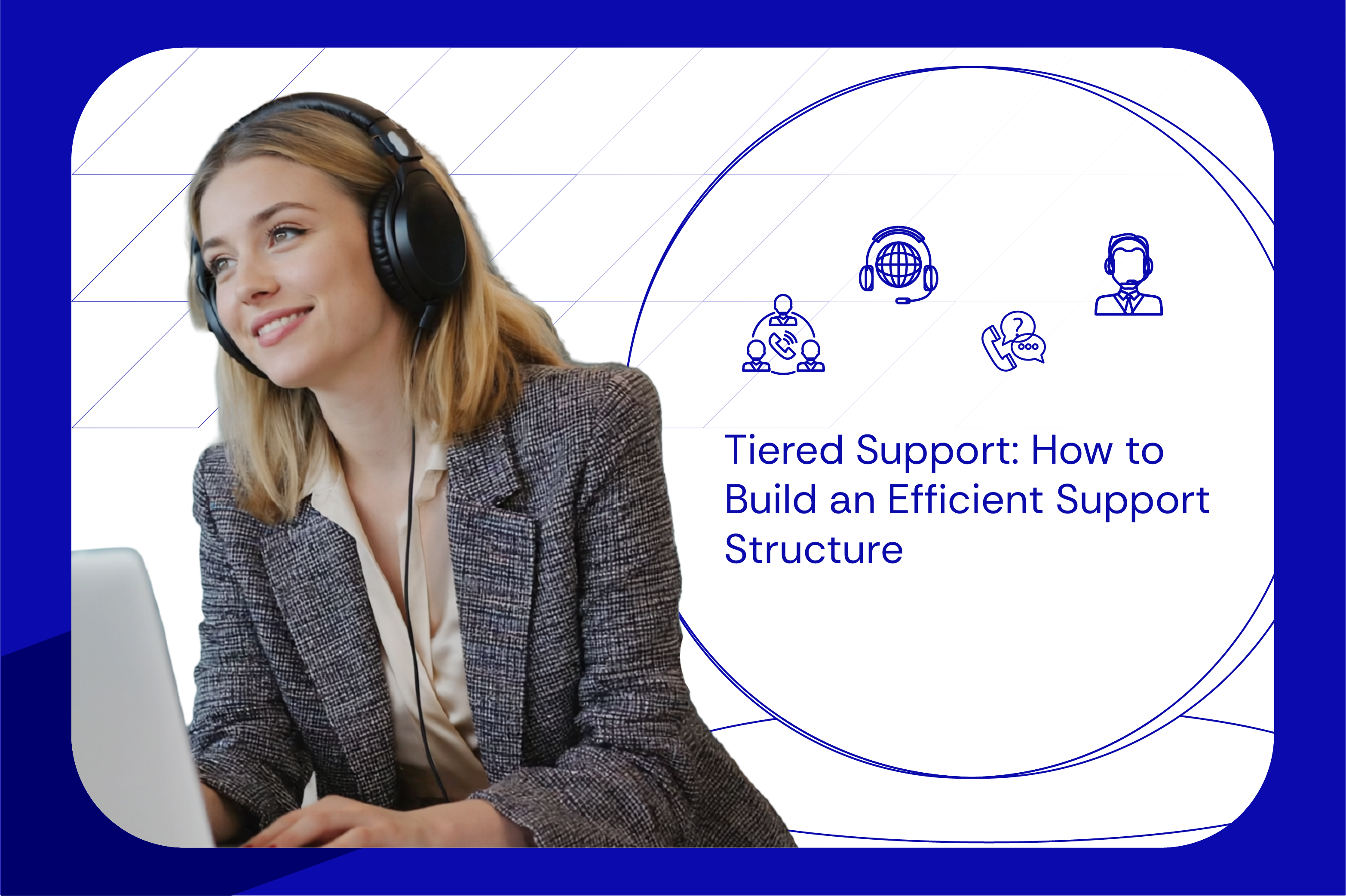A multi-tiered support model categorizes issues into different levels (tiers) based on complexity. Lower tiers handle simple problems, while higher tiers resolve more technical or specialised issues. This approach reduces downtime and improves agent efficiency.
In 2025, most consumer brands and D2C companies in the US, UK & Australia rely on tiered support to balance efficiency and customer satisfaction. Senior leaders (VPs, Directors, Sr. Managers) use customer service tiers to reduce costs and maintain loyalty in markets.
Let’s say there are two companies with customer service teams of different sizes. Company A has 300 customer service employees. Even though it’s a big team, they manage great resolution times and keep their customers happy. Because of this, they have a higher retention rate and customer loyalty.
On the other hand, Company B has a smaller team of 50 people. They handle a much lower volume of customer cases, yet they have prolonged resolution times. Their customers often feel frustrated and prefer switching to competitors.
The key difference? It’s not just the number of employees. It’s how well the team is structured and managed. Always remember that a well-organised tiered customer service model leads to happy customers, better loyalty, and more business. Whereas, a disorganised team creates confusion and unhappy customers.
According to Gartner, companies that implement a tiered service system reduce average resolution times by up to 25% compared to flat support models.
But, how to define clear processes? Is there a way to address customer questions quickly? In 2025, this is where the multi-tiered support model comes in. In this article, let’s understand what a tiered service system is, how it works and how you can make a support tier list.
Whether you are a VP, Director or Senior Manager of customer support managing a large-scale operation in the US, UK or Australia, or leading a fast-growing support function in a lean team, the structure of your service team can directly impact efficiency, customer retention and brand loyalty.
What is a Multi-Tiered System of Support?
The tiered support model is a way to organise your customer service team into different levels (or “tiers”). This allows your agents to minimise resolution time and deliver quick responses to customer queries. In this system,
- Instead of all customer issues going to the same person, they are sorted based on difficulty.
- Simple problems go to Tier 1 Tier 2 support (basic support).
- More complicated issues go to higher tiers (like Tier 2 or Tier 3), where experienced team members handle them.
By making an organised customer support tiers list, your business can provide quick answers to simple questions of your customers. Thus, your experts don’t waste time on easy problems. Additionally, customers get the right help from the right person.
Some companies have two tiers, while others have five or more, depending on their needs. Always remember the more complex the issue, the higher the tier that handles it.
This tiered support model has become the global standard across SaaS, telecom and D2C retail companies, where service efficiency is critical.
What is Tier 1 Customer Support Tech Service?
In the customer support tiers list, Tier 1 is the first level of customer support. These agents handle basic customer questions and issues. A study found that about 45-65% of customer problems can be solved at this level. Ideally, your Tier 1 agents must have good communication skills and basic troubleshooting knowledge.
What Does Tier 1 Do?
Some common duties performed by agents at this level are:
- Answering Common Questions
- They help customers with simple issues like:
- Resetting passwords
- Navigating a website
- Understanding product features
- They help customers with simple issues like:
- Collecting Information
- If the problem is complicated, they gather important details.
- Later, these details are passed along to higher support levels.
- Generally, these details are related to:
- Error messages on the customer’s screen.
- Screenshots or log files showing the problem.
- The steps the customer took before the issue happened.
- Troubleshooting Basic Issues
- Tier 1 agents try to fix simple problems by guiding customers through basic troubleshooting steps.
- If they can’t solve the problem, they send it to Tier 2 with all the collected information.
Why is Tier 1 Important?
Your agents at this level provide quick answers to customers. They don’t let them wait for experts (which improves resolution times). Additionally:
- By collecting details, they allow higher tiers to work faster.
- This reduces workload on upper customer support tiers.
- They reduce workload as Tier 1 solves about half of the customer problems. Thus, your Tier 2 and Tier 3 can focus on complex cases.
In many CX organizations, Tier 1 resolves up to 65% of all customer issues, making it the most cost efficient layer in a tiered service system.
What is Tier 2 Support?
In the support tier list, Tier 2 is the second level in the tiered customer service model. These agents handle more complex issues that Tier 1 cannot resolve. Tier 2 agents are usually more experienced and have a deeper understanding of the company’s products or services.
What Does Tier 2 Do?
Some common duties performed by agents at this level are:
- Solving Complicated Problems
- They handle technical issues that require more knowledge than Tier 1 can provide.
- Accessing Special Systems
- Usually, they have permission to use:
- Billing platforms
- Refund systems
- Internal tools
- Tier 1 agents mostly don’t have access to them.
- These permissions allow them to process refunds, update accounts, or check detailed customer data.
- Usually, they have permission to use:
- Supporting Partners and Third Parties
- In 2025, some companies work with business partners or vendors who may also need assistance.
- Tier 2 agents help these partners with special requests that regular customers don’t have.
Why is Tier 2 Important?
Agents at Tier 2 provide deeper troubleshooting and handle special cases. They fix problems that Tier 1 cannot handle. If Tier 2 also cannot solve a problem, they pass it to Tier 3 (if available), which handles the most difficult cases.
Tier 2 often resolves 25–30% of escalated issues. For high-value or VIP customers, Tier 2 helps win or lose loyalty.
How Does Multi-Tiered System of Support Work?
In this approach, a supporter tier list is prepared for customer service tiers that align agents by skills and responsibilities. As per this list, customer support teams are divided into different tiers (or levels) based on the type of help needed.
A Basic 3-Tier Model
- Tier 1: Handles simple customer questions (e.g., password reset, basic troubleshooting).
- Tier 2: Solves more technical issues that Tier 1 cannot fix.
- Tier 3: Works on complex problems, like diagnosing software issues or advanced troubleshooting.
How are Requests Handled?
- When a customer asks for help, the request goes to the right tier based on the difficulty of the issue.
- If Tier 1 can’t solve the problem, they pass it to Tier 2.
- Tier 3 only works on issues that need deep technical knowledge.
Additionally, some companies also route requests based on who the customer is (e.g., VIP customers may go directly to Tier 3). This system makes customer support faster and more effective because the right people handle the right problems.
Some businesses are adding Tier 0 as well, with resources like knowledge bases, FAQs and chatbots, which Gartner predicts can reduce up to 40% of repetitive queries in 2025.
Advantages of Multi-Tiered System of Support

A recent study found that about 75% of customers feel it takes too long to reach a live agent when contacting customer service. To resolve this problem, you can start using a tiered support structure.
By preparing a support tier list, you can significantly reduce wait times and achieve higher customer satisfaction levels. Below are some major benefits of tiered support:
1. Better Customer Service
A multi-tiered system of support allows a business to handle customer problems in an “organised way”. Simple issues go to Tier 1, whereas more complicated problems are sent to higher tiers where experts handle them.
This ensures that every issue is taken care of by the right person. As a result, customers don’t have to wait long, and employees don’t waste time on problems they are not trained to resolve.
Forrester research shows companies with structured tiered support models report 20% higher CSAT compared to those without.
2. Offers Clarity to Agents
A multi-tiered system of support clearly defines who does what in customer service. Each tier has specific responsibilities, so employees know which tasks belong to them. As a result, your agents don’t waste time figuring out what to do.
It also helps managers to:
- Set clear expectations
- Track performance
- Ensure the right person is handling each issue.
This reduces agent burnout, a common challenge for scaling support teams in the US and UK.
3. Saves Money
A multi-tiered system of support is more affordable and reduces the overall cost of providing customer service. That’s because:
- Simple problems are handled by Tier 1, which consists of lower-cost employees.
- More expensive trained staff are only needed for complex issues at higher tiers.
By organising support this way, your company doesn’t have to pay its most skilled workers to fix minor problems. This approach controls labor costs while still providing excellent service.
McKinsey estimates that tiered customer service models can reduce support costs by up to 30% while improving customer outcomes.
4. Highly Scalable
As a business grows in 2025, customer service needs will also increase. A multi-tiered system of support makes it easy to scale up by adding more employees to different tiers as needed.
For example,
- Say you observe a sudden increase in basic customer queries after a new product launch. Now, you can hire more Tier 1 agents to handle basic questions.
- Whereas, if you are getting problems of higher complexity, you can expand your higher-tier teams.
This way you can adjust to meet demand without losing quality.
Scalability is especially valuable for D2C companies where seasonal peaks can cause query volumes to increase by 2–3x.
5. Ensures Consistency in Service
With a multi-tiered system of support, all customer problems follow the same structured process. No matter which agent helps a customer, the business follows clear guidelines for handling each issue. This consistency builds trust because customers know what to expect. It also reduces mistakes and confusion within the team.
When support teams work in a structured way, they:
- Solve problems with minimum downtime
- Avoid repeating work
- Offer the best resolutions
This leads to happier customers which develops a stronger reputation for the business.
Consistency also strengthens brand reputation, companies with tiered support models achieve higher NPS benchmarks compared to flat service models.
Minimise Your Resolution Time with Atidiv’s Expertise!

By organising support teams into different levels, businesses can ensure that customer inquiries are handled by the right agents with the right expertise. In 2025, through a multi-tiered system of support, you can:
- Reduce wait times
- Offer clarity to agents on their job roles
- Improve customer satisfaction
- Save costs
A tiered support model system allows companies to scale their support operations as they grow. Need help from a customer experience specialist? We at Atidiv can provide you with expert teams that can easily integrate into your existing customer support operations.
Through our expertise, a majority of our clients have already improved resolution times and built lasting customer loyalty. Don’t lag! Optimise your customer service with Atidiv today.
Atidiv works with consumer brands and D2C companies across the US, UK & Australia to design tiered support structures. By delivering 98% QA scores and reducing costs by up to 60%, we empower CX leaders to build scalable, efficient and customer-first operations.
FAQs On Support Tier List
1. How can a multi-tiered system of support improve my customer service without increasing costs?
A tiered support system assigns simple issues to lower-cost agents (Tier 1) and complex problems to experienced staff (Tier 2 or 3). This way, you don’t need to pay salaries to your expensive top-tier staff for resolving minor issues.
This saves costs and at the same time, your customers can get expert help for critical problems. For executives, this means resources are allocated across customer service tiers, protecting budgets and customer satisfaction.
2. Will a multi-tiered system of support make my customer service slower?
No, on the contrary, a well-organised system makes service faster. It ensures that the right people handle the right issues. Simple problems get quick resolutions at Tier 1, while complex issues go directly to specialists without unnecessary delays. This reduces wait times and improves overall customer satisfaction. According to Zendesk, tiered support structures can reduce average handling time (AHT) by up to 40%.
3. How do I decide how many tiers my business needs?
The number of tiers depends on the complexity of customer inquiries. If you get mostly simple questions, two tiers may be enough. Whereas, if you receive more technical or specialised issues, adding a Tier 3 (or above) is recommended. Most D2C brands operate with 3 tiers, while enterprise SaaS or telecom providers often expand to 5 or more tiers depending on customer expectations.
4. What if my Tier 1 agents can’t collect enough information for higher tiers?
Here, you must train your Tier 1 team. You should teach them to:
- Ask the right questions
- Gather error messages, screenshots, or user actions
- Follow clear documentation guidelines
This ensures that higher tiers receive complete information which improves their efficiency. Many CX leaders introduce AI-powered intake tools to assist Tier 1 agents in capturing accurate details before escalation.
